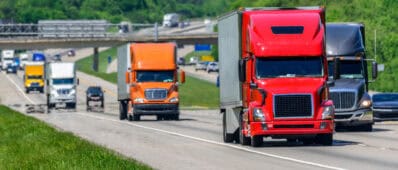Project Summary
Drayage trucks that transport goods to and from ports and intermodal terminals must be fully zero-emission by 2035. Electrifying drayage truck operations will require significant investment and strategic planning to deploy these vehicles and charging infrastructure. However, one of the main challenges hindering the mass electrification of drayage trucks is the low readiness of charging infrastructure. Dynamic wireless charging lanes (DWCLs) have emerged as a promising alternative or supplement to stationary charging stations by enabling charging-on-the-move. Although electric drayage trucks are potentially the most benefited vehicles from DWCLs, the optimal deployment of DWCLs for them is rarely studied.
To better understand DWCL applications in California, this project developed a hypothetical case study of DWCL deployment for drayage trucks on a highway network of more than 1,000 miles around the Greater Los Angeles area, home to two of the world’s busiest seaports, the Port of Los Angeles and the Port of Long Beach. The project identified optimal locations for DWCLs to serve drayage trucks efficiently along with consideration of suitable grid connection and upgrades of existing power grid to meet heightened energy demand. A large-scale Global Positioning System (GPS) dataset and an electrical substation dataset, which contain more than 7,000 heavy-duty drayage trucks that span over a period of 12 months and over 255 substations, were utilized to provide the necessary input to the proposed framework.

